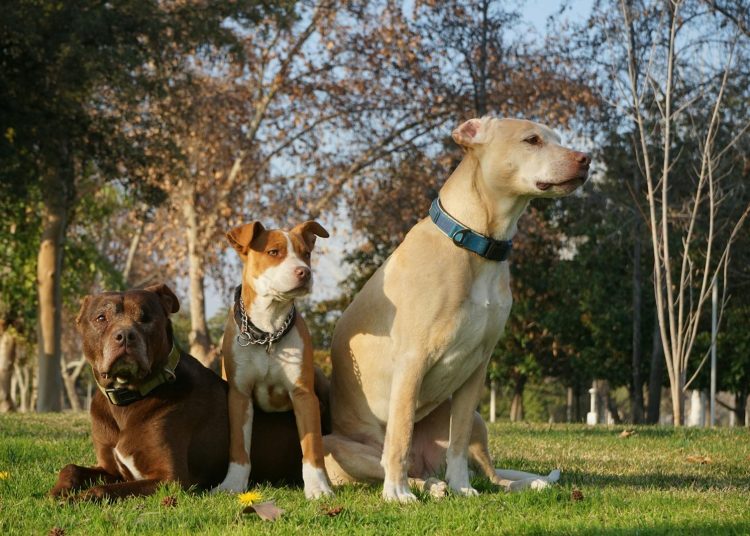Finding the right collar for your dog is more than just a matter of style—it’s about comfort, safety, and choosing a collar that suits your dog’s unique needs. With so many different breeds, sizes, and personalities, there is no one-size-fits-all collar. In this guide, we explore the different types of collars available, how to choose the best one for your breed, and what factors to consider to ensure that your furry friend stays comfortable and secure.
1. Understanding Different Types of Dog Collars
Before choosing a collar, it is important to understand the different types available and their specific uses. Here are some of the most common types of dog collars:
- Flat Collars: These are the most basic type of collar, featuring a simple strap that fastens with either a buckle or a quick-release clip. Flat collars are ideal for everyday use and can be personalized with your dog’s name and your contact information.
- Martingale Collars: Also known as limited-slip collars, these collars are designed to prevent dogs from slipping out of them. They are particularly popular for breeds with slender necks, such as Greyhounds and Whippets. Martingale collars tighten slightly when the dog pulls, but they are safer and more comfortable than choke chains.
- Harnesses: While technically not a collar, harnesses are often used as an alternative for dogs that tend to pull or for those with respiratory issues. They distribute pressure across the chest rather than the neck, making them a good choice for breeds like Pugs or French Bulldogs that are prone to breathing difficulties.
- Choke Chains and Prong Collars: These collars are used for training purposes but should only be used under the supervision of a professional trainer. They can cause injury if used incorrectly and are not recommended for everyday use.
- Head Collars: Head collars, such as the Gentle Leader, are designed to give owners more control over strong or reactive dogs. They work by guiding the dog’s head, which in turn controls the body. They are often used for training large breeds like Labrador Retrievers or German Shepherds.
2. Choosing the Right Size Collar
The size of the collar is one of the most important factors to consider. A collar that is too tight can cause discomfort or injury, while a collar that is too loose can easily slip off. To find the perfect fit, measure your dog’s neck using a flexible measuring tape and add about two inches to the measurement.
The collar should fit snugly but not too tight—you should be able to fit two fingers comfortably between the collar and your dog’s neck. Many collars come in adjustable sizes, which is particularly useful for growing puppies or dogs that gain or lose weight. Be sure to check the fit regularly, especially if your dog is still growing.
3. Breed-Specific Considerations
Different breeds have different needs when it comes to collars. Here are some breed-specific considerations to help you choose the best collar for your dog:
- Small Breeds (Chihuahuas, Yorkies, Pomeranians): Small breeds have delicate necks, so lightweight collars made from soft materials like nylon or leather are ideal. A harness is also a great option for small breeds to avoid putting pressure on their necks.
- Large Breeds (Labrador Retrievers, German Shepherds, Rottweilers): Large breeds need strong, durable collars that can handle their size and strength. A wide, flat collar made from leather or heavy-duty nylon is a good choice. Martingale collars are also useful for breeds that have a tendency to pull.
- Breeds with Short Noses (Pugs, Bulldogs): Brachycephalic breeds are prone to respiratory issues, so collars that put pressure on the neck should be avoided. A harness is a much better option for these breeds, as it allows them to breathe more easily.
- Breeds with Long, Slender Necks (Greyhounds, Whippets): For breeds with slender necks, a martingale collar is often the best choice. These collars provide gentle control without the risk of slipping off, which is particularly important for breeds that are known to back out of their collars.
4. Material Matters
The material of the collar plays a significant role in its comfort, durability, and appearance. Here are some of the most common materials used for dog collars:
- Nylon: Nylon collars are lightweight, affordable, and available in a wide range of colors and patterns. They are a great option for everyday use and are suitable for most breeds.
- Leather: Leather collars are durable, comfortable, and stylish. They are well-suited for large breeds and dogs that need a strong collar. Leather collars are more expensive than nylon, but they can last for years if properly cared for.
- Biothane: Biothane is a synthetic material that is waterproof, easy to clean, and highly durable. It is a great option for dogs that love to swim or for owners who want a low-maintenance collar that can withstand the elements.
5. Safety Features to Look For
When choosing a collar, safety should always be a priority. Here are some safety features to consider:
- Breakaway Collars: Breakaway collars are designed to release if they become caught on something, reducing the risk of strangulation. These collars are especially important for dogs that are left unsupervised or for those that play with other dogs.
- Reflective or LED Collars: If you walk your dog early in the morning or late at night, a reflective or LED collar can help keep your pet visible to passing cars. This is particularly important for dark-coated breeds or dogs that are walked in areas with low visibility.
- Identification Tags: Make sure the collar has a place for an ID tag with your contact information. Even if your dog is microchipped, an ID tag provides a quick and easy way for someone to contact you if your dog gets lost.
6. Comfort and Fit
Comfort is key when choosing a collar for your dog. Look for collars with padded interiors or rounded edges to prevent chafing, especially if your dog wears their collar for extended periods. If your dog has sensitive skin, opt for a hypoallergenic material like leather or organic cotton.
It is also important to consider the weight of the collar, particularly for smaller breeds. A heavy collar can be uncomfortable and may cause strain on your dog’s neck. Lightweight materials like nylon or Biothane are great options for small dogs or puppies.
7. Training and Behavior Considerations
If your dog pulls on the leash or has behavior issues, choosing the right collar can make a big difference in your training efforts. Martingale collars are a popular choice for training, as they provide gentle correction without choking. Head collars are also useful for training larger breeds that are difficult to control.
For dogs that are prone to lunging or pulling, consider using a front-clip harness in combination with a collar. This setup can provide extra control and help reduce pulling behavior, making walks more enjoyable for both you and your dog.
Finding the Perfect Collar
Choosing the perfect collar for your dog requires careful consideration of their breed, size, personality, and specific needs. Whether you opt for a classic leather collar, a martingale for added security, or a lightweight nylon option for your small breed, the right collar can make all the difference in your dog’s comfort and safety. By taking the time to find the perfect fit, you can ensure that every walk is a safe, stylish, and enjoyable experience for both you and your furry friend.








